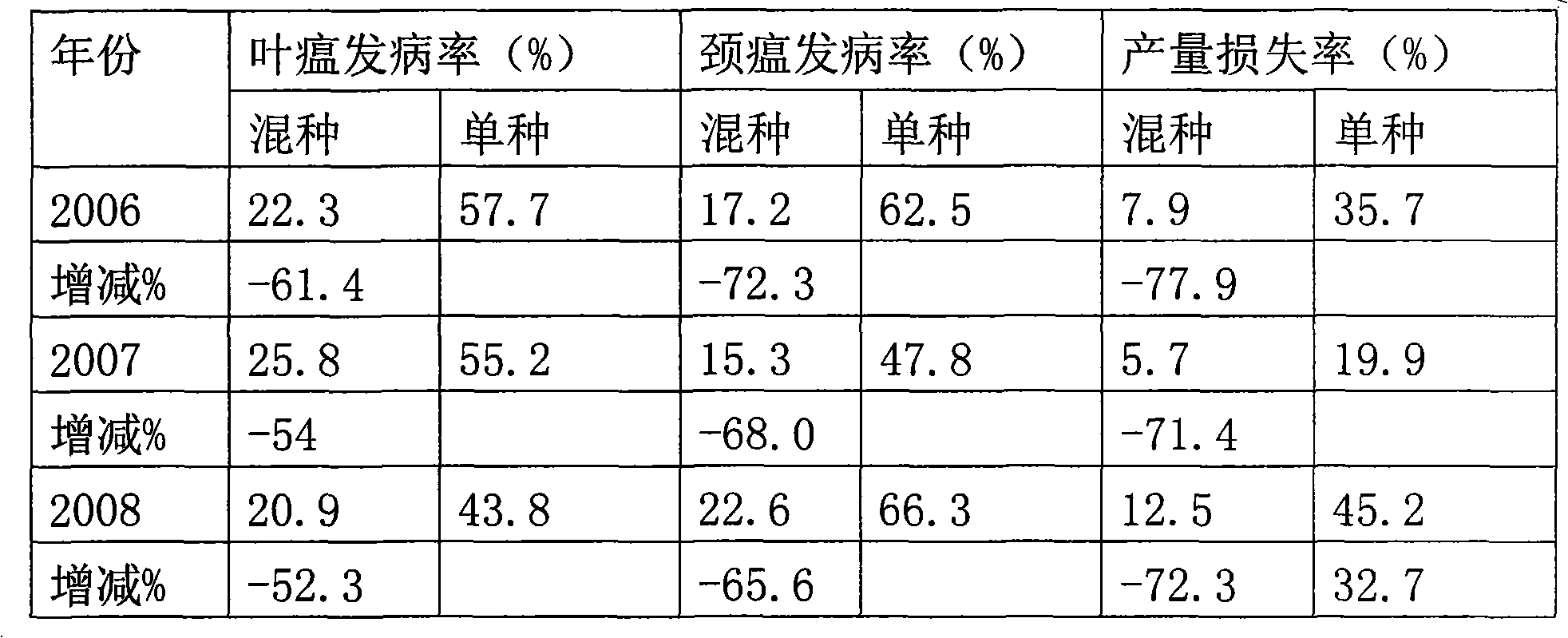Breeding method of crop fungal disease permanent disease-resistant compound train
A technology of fungal diseases and breeding methods, applied in the field of plant variety breeding, can solve the problems of lack of persistence of disease resistance, non-durability of resistance, and great difficulty in varieties, so as to achieve long-lasting resistance of crops, increase flexibility, and reduce selection. The effect of pressure
- Summary
- Abstract
- Description
- Claims
- Application Information
AI Technical Summary
Problems solved by technology
Method used
Image
Examples
Embodiment 1
[0024] Example 1: Cultivation of long-lasting blast-resistant compound line conventional rice varieties in Chongqing rice area
[0025] (1) Existing research literature shows that there are four major rice blast populations in Chongqing, ZA, ZB, ZC, and ZD. The existing blast-resistant materials are identified for resistance spectrum, and the resistance gene materials of the four populations are obtained;
[0026] (2) These 4 resistance genes are assigned to near isogenic lines, the number of near isogenic lines is 2-4, we select 4, that is, each near isogenic line is resistant to a rice blast population;
[0027](3) The four population-resistant rice materials were crossed with the intermediate material Qhui 108, and then recrossed, and the agronomic traits were consistently selected from the F2 to F6 pedigrees by a combination of molecular marker-assisted selection and rice blast resistance spectrum identification Resistant individual plants of various populations, these sta...
Embodiment 2
[0029] Embodiment 2: Breeding hybrid rice varieties of my country's long-lasting rice blast resistance compound line
[0030] (1) Existing research literature shows that there are seven populations of blast fungus ZA, ZB, ZC, ZD, ZE, ZF, and ZG in my country, and disease-resistant genes resistant to genetic resource materials or clones of various populations have been obtained through introduction or identification;
[0031] (2) Cultivation of breeding intermediate materials with complementary resistance spectrum: use conventional hybridization, molecular marker-assisted selection, or transgenic methods to select one or a combination thereof, and use mature elite sterile lines as carriers to combine physiological races resistant to ZB group and Gene transfer of anti-ZG group physiological races to cultivate sterile lines (female parents) resistant to ZB group physiological races and ZG group physiological races respectively; use mature and excellent restorer lines as carriers t...
PUM
 Login to View More
Login to View More Abstract
Description
Claims
Application Information
 Login to View More
Login to View More - R&D
- Intellectual Property
- Life Sciences
- Materials
- Tech Scout
- Unparalleled Data Quality
- Higher Quality Content
- 60% Fewer Hallucinations
Browse by: Latest US Patents, China's latest patents, Technical Efficacy Thesaurus, Application Domain, Technology Topic, Popular Technical Reports.
© 2025 PatSnap. All rights reserved.Legal|Privacy policy|Modern Slavery Act Transparency Statement|Sitemap|About US| Contact US: help@patsnap.com

